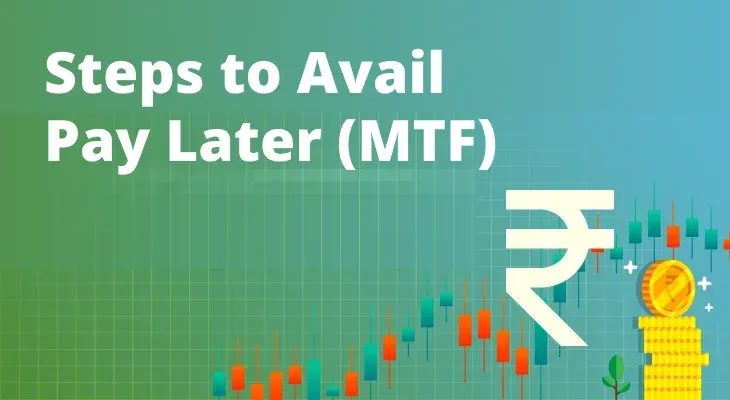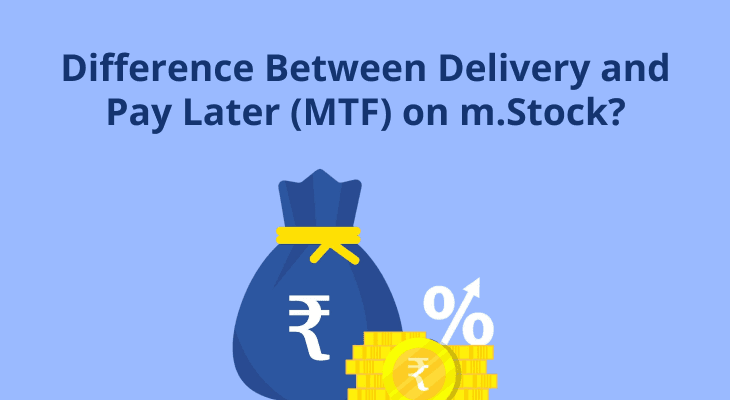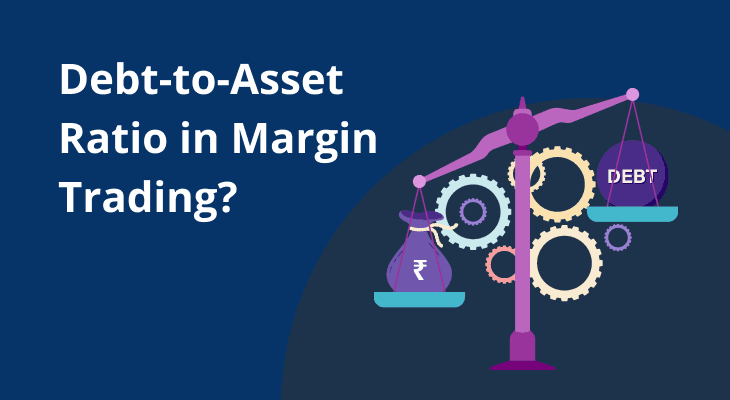
What is Pay Later (MTF) & Steps to Avail Pay Later
Margin trading is a popular feature offered by financial institutions that allows investors to trade securities using borrowed funds. It enables traders to increase their purchasing power and potentially amplify their returns. In India, the Securities and Exchange Board of India (SEBI) regulates margin trading facilities provided by brokers and exchanges. This article will delve into the meaning of margin trading, its requirements, regulations, benefits, risks, and popular strategies used by traders in India.
Read Also: Pay Later (MTF) from 6.99%
How Does Margin Trading Work?
Margin trading allows investors to buy or sell securities by borrowing funds from their broker. Instead of paying the full amount upfront, traders are required to deposit a certain percentage, known as the margin, while the broker provides the remaining amount. The margin serves as collateral for the loan and can be in the form of cash or approved securities.
By leveraging their investments, traders can participate in larger trades and potentially enhance their profits. However, it's crucial to note that margin trading amplifies both gains and losses, as traders are exposed to fluctuations in the market.
Margin Trading Requirements and Regulations in India
In India, margin trading is subject to specific regulations imposed by SEBI. Brokers offering margin trading facilities must adhere to these regulations to ensure investor protection and market stability.
SEBI has set certain eligibility criteria for individuals and entities interested in availing of margin trading. These criteria include a minimum net worth requirement, compliance with the capital adequacy norms, and a clean track record. Additionally, brokers are required to maintain separate client accounts for margin trading to ensure transparency and prevent misappropriation of funds.
Furthermore, SEBI mandates brokers to provide risk disclosure documents and ensure that investors understand the risks associated with margin trading. This includes educating investors about margin calls, potential loss scenarios, and the consequences of failing to meet margin requirements.
Benefits and Risks of Margin Trading
Margin trading offers several benefits to investors. Firstly, it provides increased purchasing power, enabling traders to take larger positions and potentially generate higher returns. It also offers flexibility, as traders can take advantage of short-selling opportunities to profit from falling markets. Moreover, margin trading allows investors to diversify their portfolios and access a wider range of investment opportunities.
However, margin trading also carries inherent risks. Since traders are using borrowed funds, any losses incurred are magnified, potentially resulting in significant financial losses. Additionally, margin trading involves interest payments on borrowed funds, which can impact overall profitability. It requires diligent monitoring of market conditions and disciplined risk management to prevent excessive losses and margin calls.
Read Also: How does m.Stock’s Pay Later (MTF) benefit your trades?
Steps to Avail Pay Later (MTF) on m.Stock
By now you must have realised the lucrative earning potential offered by margin trading and must be eager to try it out yourself. m.Stock offers one of the lowest MTF interest rates and an entirely hassle-free process. Here are the steps for margin trading with m.Stock:
Step 1:
Login to your m.Stock account through the mobile app or web portal
Step 2:
Go through the mtf list of stocks available in MTF
Step 3:
Select the stock you wish to buy and enter the quantity (the margin amount required and available to will be automatically displayed on the screen)
Step 4:
Place the order, and you’re done. Stocks in your Pay Later (MTF) order will be pledge automatically with CDSL.
Before availing of Pay Later (MTF), you calculate your trading potential and brokerage savings using the free-to-use MTF calculator available on m.Stock’s website.
Additional Benefits of Pay Later (MTF)
Margin trading facility in India provides you with the opportunity to leverage your investments and potentially enhance your returns. It allows you to participate in larger trades and access a wider range of investment opportunities. However, it is crucial to understand the requirements, regulations, and risks associated with margin trading.
SEBI's regulations play a vital role in ensuring investor protection and market stability. Eligibility criteria, capital adequacy norms, and risk disclosure documents are all measures put in place to safeguard the interests of investors. By following these regulations, brokers provide a transparent and secure environment for margin trading.
While margin trading offers benefits such as increased purchasing power and flexibility, it also comes with risks. The magnification of losses, interest payments on borrowed funds, and the need for diligent risk management are factors that you must consider. It is essential to have a thorough understanding of the market and employ disciplined strategies to mitigate potential risks. By being well-informed and implementing disciplined risk management, you can make informed decisions and navigate the market effectively.
Read Also: Features & Benefits of Margin Trading
FAQ
What is margin trading?
Margin trading is a facility provided by brokers that allows you to trade securities using borrowed funds. It enables you to increase your purchasing power and potentially amplify your returns.
You can avail of margin trading by depositing a certain percentage of the total trade value, known as the margin, while the broker provides the remaining funds. While you can participate in larger trades, you are also exposed to amplified losses.
What are the eligibility criteria for margin trading in India?
Eligibility criteria for margin trading in India include a minimum net worth requirement, compliance with capital adequacy norms, and a clean track record. Brokers must also maintain separate client accounts for margin trading to ensure transparency.
Are there any charges for using the margin trading facility?
Since the capital used in margin trading is borrowed from the broker, there is an interest rate applicable on the loan. m.Stock, by Mirae Asset, offers MTF as one of the lowest rates in the industry ranging between 6.99% - 9.99%, depending upon the amount borrowed that can cover up to 80% of the funding for your trades. An additional ₹ 25 is charged as share pledge charges. There is no cost of subscription for MTF and no hidden charges either. Furthermore, you can opt for the Zero Brokerage plan and trade for free all your life.
What are some popular margin trading strategies in India?
Popular margin trading strategies in India include long/short strategies, pair trading, momentum trading, and event-based trading. Each strategy has its own principles and techniques aimed at capitalising on market trends and generating returns.
What are the risks of margin trading?
Margin trading carries risks, including amplified losses, interest payments on borrowed funds, and the potential for margin calls. You must carefully monitor market conditions and employ disciplined risk management strategies.


